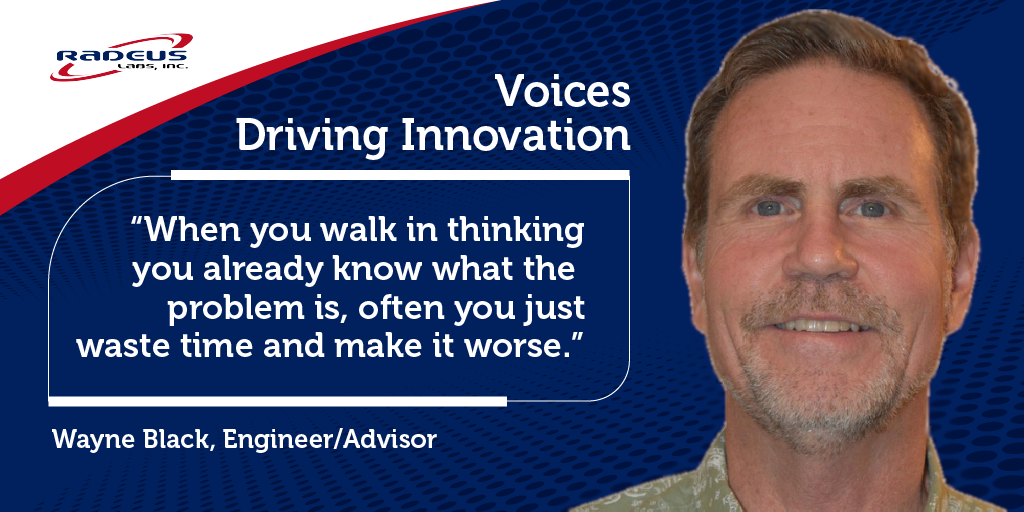SATELLITE 2025 wrapped up earlier this month, leaving satcom professionals with plenty to discuss as the industry continues to evolve at breakneck speed. The event, held in Washington, D.C., was a three-day deep dive into the future of satellite communications, featuring discussions on Low Earth Orbit (LEO) advancements, direct-to-cell technologies, next-gen antenna solutions, and a shifting landscape in both the commercial and military sectors.
For Radeus Labs, a long-time sponsor at SATELLITE, the event provided an opportunity to connect with key partners, introduce new computing solutions, and assess industry trends. While some noted a slight dip in attendance—especially with the Department of Defense (DoD) unable to attend—the exhibit floor felt larger than in previous years, and the conversations around future business opportunities were stronger than ever.
 A Growing Exhibit Hall, Despite Some Changes in Attendees
A Growing Exhibit Hall, Despite Some Changes in Attendees
From the perspective of Chris Steph, Director of Sales & Marketing at Radeus Labs, this year’s event felt bigger in terms of exhibitor presence. While the official numbers weren’t confirmed, there was a clear increase in antenna providers and smaller technology firms showcasing new innovations.
This year was also Radeus Labs' first time introducing their computing products at SATELLITE, an area that generated significant interest from industry professionals looking for crossover applications into the satcom sector.
LEO and Direct-to-Cell: The Next Big Shift in Satcom
One of the dominant themes at SATELLITE 2025 was the continued expansion of Low Earth Orbit (LEO) satellite technologies. This has been a growing conversation year after year, but in 2025, it became a central focus. One of the most talked-about innovations? Direct-to-cell communication from LEO satellites.
One of the most talked-about innovations? Direct-to-cell communication from LEO satellites.
Two companies in particular—AST SpaceMobile and Lynk—are pioneering this technology, which would allow standard cell phones to communicate directly with LEO satellites without the need for traditional cell towers.
"Imagine being on the back of a mountain, breaking a leg while skiing, and still having full cell service. That’s the future these companies are building," Steph explained.
The technology is still in its early stages, but AST SpaceMobile already has six satellites in orbit, with contracts forming with Vodafone, Verizon, and other major carriers. If these direct-to-cell networks prove effective, they could dramatically reduce the need for traditional terrestrial cell towers, potentially redefining global mobile connectivity.
As these technologies develop, the implications are massive—not just for consumer mobile services, but for emergency response, defense applications, and connectivity in remote regions worldwide.
Antenna and Ground Systems: An Expanding Market
Another key trend at SATELLITE 2025 was the increase in smaller antenna providers showcasing efficient tracking antennas for LEO applications.
Historically, companies like CPI, AVL, and Cobham have dominated the market, but this year saw a rise in smaller, more agile players entering the space.
"We noticed a lot more smaller companies with antenna solutions this year," said Steph. "The demand for LEO-compatible ground infrastructure is clearly accelerating."
With the industry shifting toward LEO and multi-orbit solutions, the ability to develop cost-effective, highly mobile ground stations is becoming more critical. This emerging competition among antenna providers could lead to faster innovation and better price points for customers looking to support LEO constellations.
GovMilSpace: A New Addition, but an Uncertain Future
 One of the notable additions to SATELLITE 2025 was the introduction of GovMilSpace, a dedicated track focused on military and government satellite communications.
One of the notable additions to SATELLITE 2025 was the introduction of GovMilSpace, a dedicated track focused on military and government satellite communications.
This was a first-time expansion for the conference, aiming to bring together defense-sector professionals to discuss the evolving role of satcom in military operations, national security, and intelligence applications.
However, with DoD attendance restricted this year, the impact of GovMilSpace was muted.
Looking ahead to SATELLITE 2026, it will be interesting to see whether GovMilSpace can gain traction.
Looking Ahead to SATELLITE 2026
One thing was clear from SATELLITE 2025: The industry is in a state of transition.
- LEO is no longer just an emerging trend—it’s becoming a dominant force in satcom.
- Direct-to-cell technology is on the horizon and could reshape mobile connectivity forever.
- Antenna and ground system providers are rapidly evolving to meet the needs of a multi-orbit world.
- The integration of military and commercial satcom remains a question mark, with the future of GovMilSpace still uncertain.
For Radeus Labs, the interest in their computing solutions, strong distributor relationships, and expanding crossover opportunities into satcom made this year’s event a success.
Let’s Keep the Conversation Going
As the satellite industry evolves, Radeus Labs is at the forefront, delivering high-performance computing and satcom solutions built for the future. Whether you're exploring next-gen technology, seeking a trusted partner, or looking for expert insights, we’re here to help.
Get in touch today to discuss your needs or request a personalized quote.

.png)



